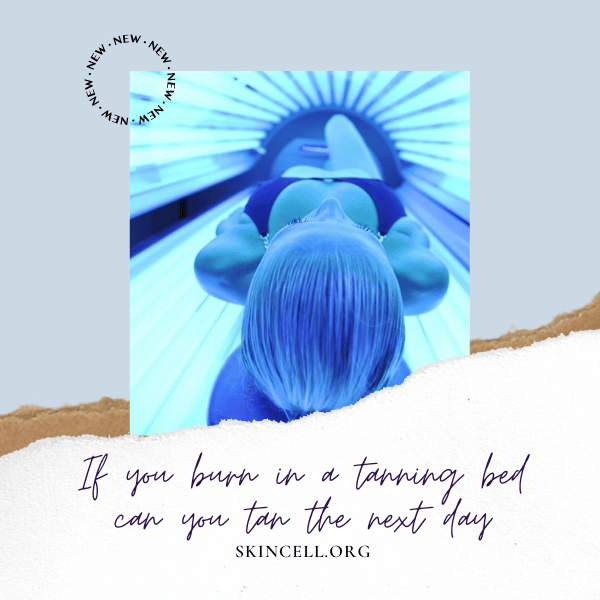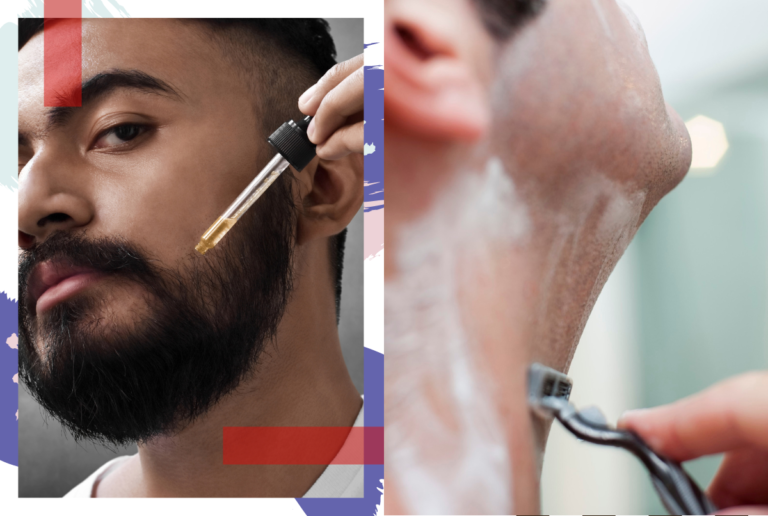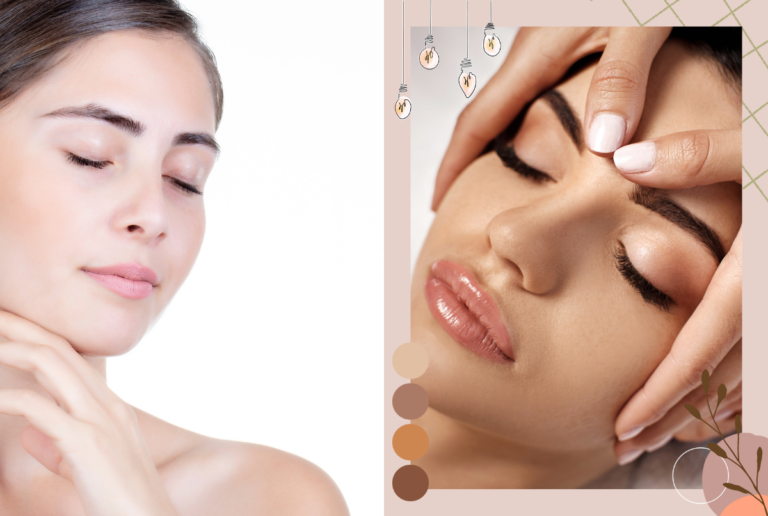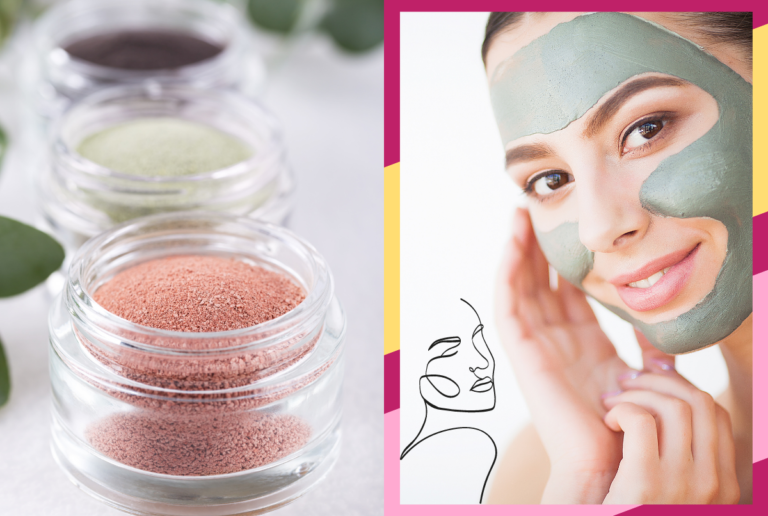Can You Tan the Next Day If You Burn in a Tanning Bed?
If you’ve experienced a burn from a tanning bed, it’s crucial to prioritize your skin’s healing before attempting to tan again.
Tanning bed burns can be painful and potentially harmful, increasing the risk of skin damage and skin cancer.
Well, we’ll be going over:
- The importance of allowing your skin to fully heal after a tanning bed burn.
- Steps to take for immediate relief and to promote healing of a tanning bed burn.
- The risks associated with tanning, especially after a recent burn, and healthier alternatives to achieve a sun-kissed look.
Let’s dive in

Key Takeaways
- Tanning bed burns can increase your risk of skin cancer and should be taken seriously.
- After experiencing a tanning bed burn, it’s important to cool your skin down and avoid further UV exposure.
- It’s best to wait until your skin has fully healed before attempting to tan again.
Understanding Tanning Bed Burns
If you’re someone who likes to get a tan, you may be tempted to use a tanning bed. However, it’s important to understand the risks associated with tanning beds, including the possibility of getting burned.
In this section, we’ll explore the causes of burns from tanning beds, as well as the symptoms and skin damage that can occur.
Causes of Burns from Tanning Beds
Tanning beds emit UV rays, which can cause burns and skin damage if you’re exposed to them for too long. The intensity of the UV rays in a tanning bed can be much stronger than the sun’s rays, which means that you can get burned much more quickly.
Additionally, if you have fair skin, you may be more susceptible to burns from tanning beds.
Another factor that can contribute to tanning bed burns is the length of time you spend in the bed. If you stay in the bed for too long, you may get burned. It’s important to follow the manufacturer’s instructions for the tanning bed and to start with short sessions to avoid getting burned.
Symptoms and Skin Damage
If you get burned in a tanning bed, you may experience discomfort, redness, and blistering. In some cases, the burned skin may even peel. Tanning bed burns can also cause long-term skin damage, including premature aging and an increased risk of skin cancer.
It’s important to take steps to prevent tanning bed burns, such as using a tanning lotion with SPF, wearing protective eyewear, and following the manufacturer’s instructions for the tanning bed. If you do get burned, it’s important to treat the burn with care, such as applying a cool compress and avoiding further exposure to UV rays.
In conclusion, tanning bed burns can be painful and lead to long-term skin damage. It’s important to take steps to prevent burns and to be aware of the symptoms and skin damage that can occur. By following the manufacturer’s instructions and taking proper precautions, you can enjoy a safe and healthy tan.
Immediate Aftercare for Tanning Bed Burns
Tanning bed burns can be painful and uncomfortable, but there are ways to treat and alleviate the symptoms. Here are some tips for immediate aftercare for tanning bed burns.
Cooling Down the Skin
The first thing you should do after getting a tanning bed burn is to cool down the affected area. You can take a cool shower or apply a cold compress to the burned area to reduce inflammation and soothe the skin. Avoid using hot water or ice, as they can further damage the skin.
Hydration and Moisturizing
After cooling down the skin, it’s important to keep it hydrated and moisturized. Drink plenty of water to stay hydrated and apply a moisturizer to the affected area. Look for a moisturizer that contains aloe vera, as it can help soothe and heal the skin.
Here are some other tips for moisturizing and hydrating the skin:
- Apply moisturizer to the affected area at least twice a day.
- Use a gentle, fragrance-free moisturizer to avoid further irritation.
- Avoid using products that contain alcohol or other harsh ingredients that can dry out the skin.
By following these tips, you can help treat and alleviate the symptoms of tanning bed burns. Remember to always take care of your skin and avoid overexposure to UV rays.
When to Tan Again After a Burn
Tanning beds provide a convenient way to achieve a golden glow, but if you’re not careful, you can easily get a burn. If you’ve been burned in a tanning bed, you may be wondering when it’s safe to tan again. In this section, we’ll explore the healing process and how to build a safe tanning routine.
Healing Time and Skin Assessment
The healing time for a tanning bed burn varies depending on the severity of the burn and your skin type. Generally, it takes about 2-7 days for a mild to moderate burn to heal. However, if you have a severe burn, it can take up to two weeks or more to heal.
Before you tan again, it’s important to assess your skin. If your skin is still red, peeling, or blistered, it’s not ready for another tanning session. Tanning on damaged skin can lead to further damage and increase your risk of skin cancer.
Building a Safe Tanning Routine
To build a safe tanning routine, start with a base tan. A base tan is a light tan that provides some protection against sunburn. It’s important to note that a base tan does not provide complete protection against UV rays.
When you’re ready to tan again, start with a short tanning session. If you have fair skin, limit your tanning time to 5-10 minutes. If you have darker skin, you can tan for up to 15-20 minutes.
It’s also important to use a high-quality tanning lotion to protect your skin and promote an even tan. Look for a lotion that contains SPF and moisturizing ingredients to keep your skin healthy.
In conclusion, if you’ve been burned in a tanning bed, it’s important to give your skin time to heal before tanning again. Once your skin has healed, start with a base tan and gradually increase your tanning time to avoid getting another burn. Remember to always use a high-quality tanning lotion and protect your skin from UV rays.
Protecting Skin from Further Damage
If you have burned your skin in a tanning bed, it is important to take steps to protect it from further damage. Sunburns from tanning beds can be painful and increase the risk of skin cancer.
Sunscreen and Protective Measures
One of the most important steps you can take to protect your skin from further damage is to apply sunscreen. Look for a broad-spectrum sunscreen that protects against both UVA and UVB rays and has an SPF of at least 30. Apply it generously to all exposed skin, and reapply every two hours or after swimming or sweating.
In addition to sunscreen, consider wearing protective clothing such as a wide-brimmed hat, long-sleeved shirt, and pants. You can also use sprays or powders that contain SPF to protect your scalp and other hard-to-reach areas.
Alternatives to Tanning Beds
If you want to avoid further damage to your skin, consider alternatives to tanning beds. Sunless tanning products such as lotions, sprays, and foams can give you a natural-looking tan without the risks of UV exposure. You can also try using a bronzer or self-tanning wipes to add color to your skin.
In conclusion, if you have burned your skin in a tanning bed, it is important to take steps to protect it from further damage. Apply broad-spectrum sunscreen, wear protective clothing, and consider alternatives to tanning beds to keep your skin healthy and beautiful.
Understanding the Risks of Tanning
Short-Term and Long-Term Health Concerns
Tanning is a popular activity for many people who want to achieve a sun-kissed glow. However, it is important to understand the risks associated with tanning, especially in tanning beds.
Short-term health concerns associated with tanning in tanning beds include skin burns, eye irritation, and dehydration. These health concerns can occur if you do not follow the recommended guidelines for tanning bed use.
Long-term health concerns associated with tanning include an increased risk of skin cancer, including melanoma, which is the most dangerous type of skin cancer. Tanning in tanning beds exposes your skin to harmful ultraviolet (UV) radiation, which can damage your skin cells and increase your risk of developing skin cancer.
Public Health Recommendations
To reduce your risk of skin cancer and other health concerns, it is recommended that you avoid tanning in tanning beds altogether. If you do choose to tan, it is important to follow the recommended guidelines for tanning bed use.
These guidelines include wearing protective eyewear, limiting your tanning sessions to no more than once a week, and gradually increasing your tanning time to avoid skin burns.
It is also recommended that you regularly check your skin for any changes, such as new moles or changes in the appearance of existing moles. If you notice any changes, it is important to seek medical attention right away.
In addition to these guidelines, it is important to protect your skin from the sun by wearing protective clothing, such as hats and long-sleeved shirts, and using sunscreen with a high SPF. Sunscreen can help protect your skin from the harmful effects of UV radiation, while also providing your body with the vitamin D it needs to stay healthy.
Overall, it is important to understand the risks associated with tanning in tanning beds and to take steps to protect your skin from the harmful effects of UV radiation. By following the recommended guidelines for tanning bed use and protecting your skin from the sun, you can help reduce your risk of skin cancer and other health concerns.
Frequently Asked Questions
How long should one wait before tanning again after sustaining a burn from a tanning bed?
It is highly recommended to wait for at least 48 hours before tanning again after sustaining a burn from a tanning bed. This time frame allows the skin to heal and prevents further damage to the affected area.
What are the symptoms of a tanning bed burn?
The symptoms of a tanning bed burn include redness, pain, itching, and peeling of the skin. In severe cases, blisters may also appear on the affected area.
What are effective treatments for a first-degree burn caused by a tanning bed?
For a first-degree burn caused by a tanning bed, it is recommended to apply a cool compress or take a cool bath to soothe the affected area. Over-the-counter creams or ointments containing aloe vera or hydrocortisone can also help reduce inflammation and pain.
Can experiencing a burn from a tanning bed lead to illness?
Experiencing a burn from a tanning bed can lead to long-term skin damage and increase the risk of developing skin cancer. It is important to take precautions and protect your skin from harmful UV rays.
How can a tanning bed burn, especially on sensitive areas like the face, be soothed quickly?
To soothe a tanning bed burn on sensitive areas like the face, it is recommended to apply a cool compress or take a cool bath to reduce inflammation and pain. Over-the-counter creams or ointments containing aloe vera or hydrocortisone can also help soothe the affected area.
Does a burn from a tanning bed eventually develop into a tan?
No, a burn from a tanning bed does not develop into a tan. In fact, sustaining a burn from a tanning bed can cause long-term skin damage and increase the risk of developing skin cancer. It is important to take precautions and protect your skin from harmful UV rays.






